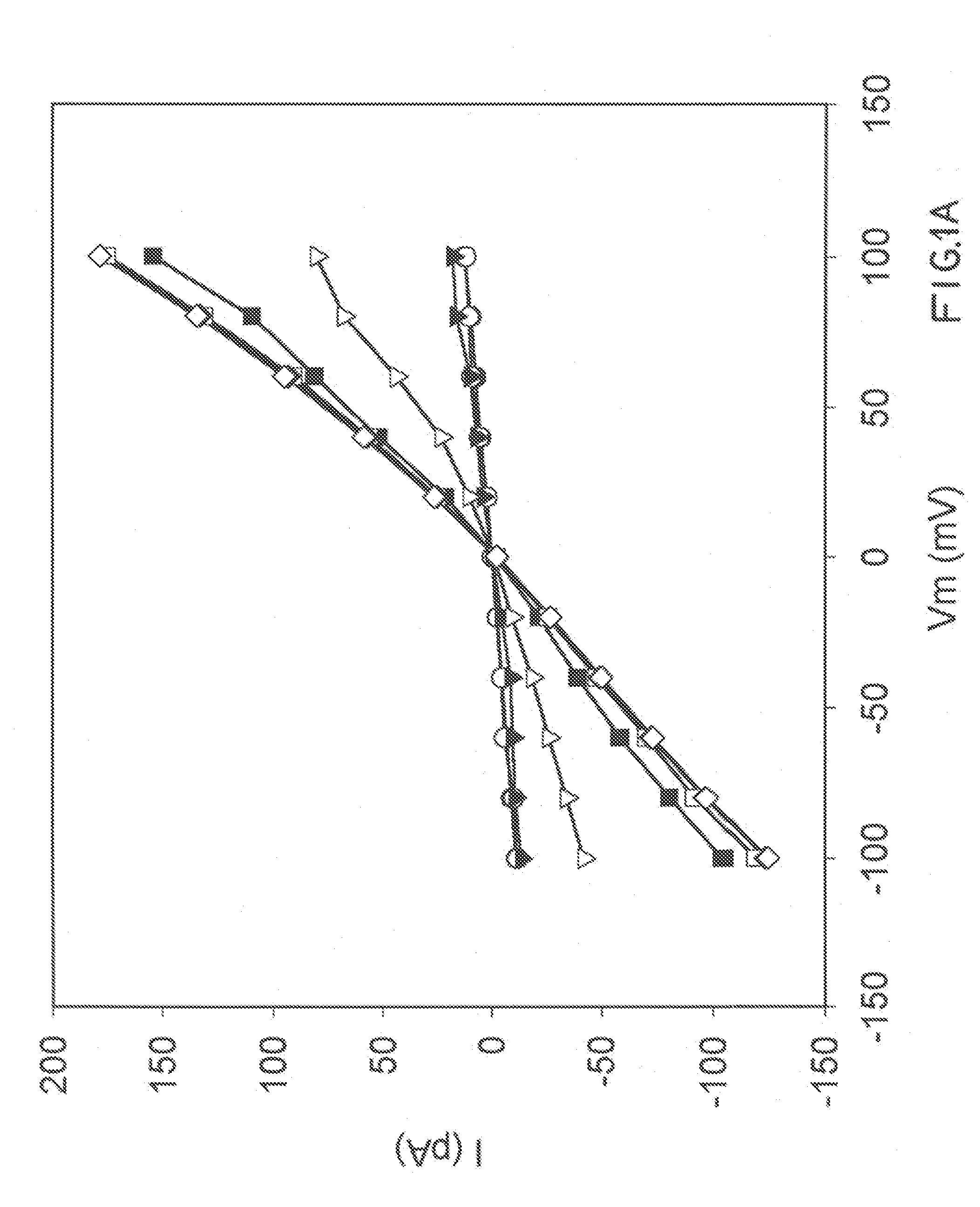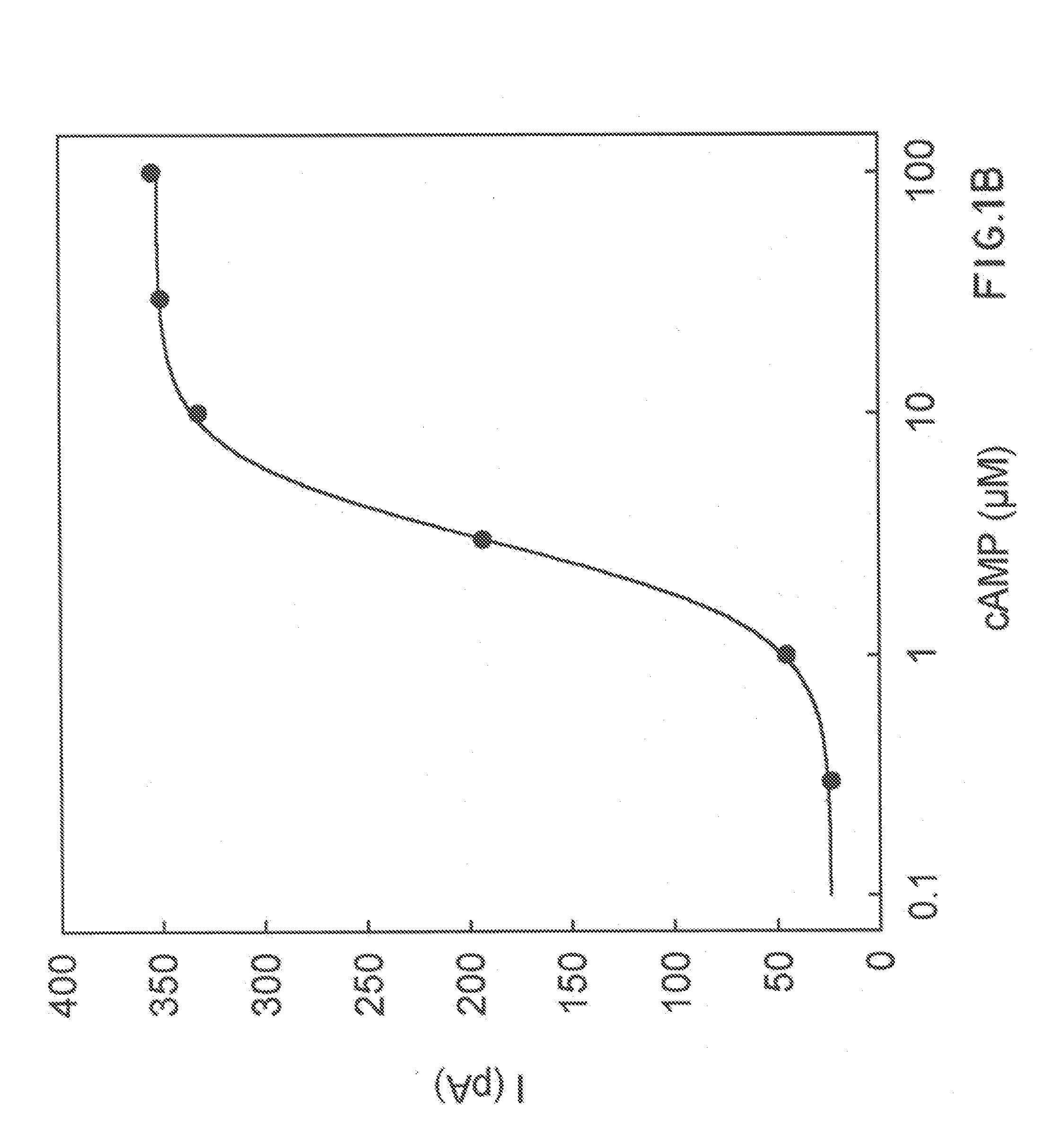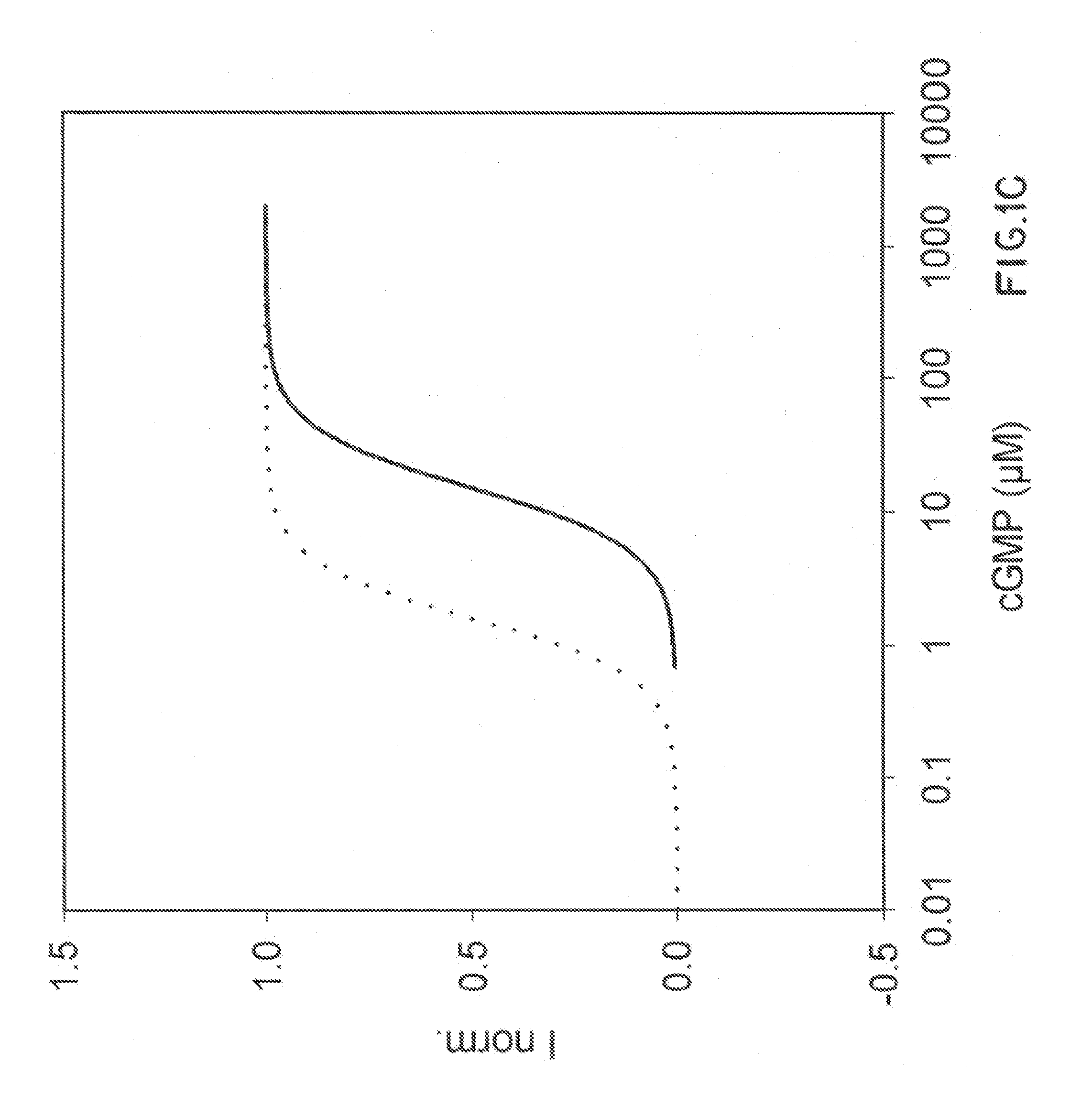Genetically modified cyclic-nucleotide controlled ion chan
a technology of cyclic nucleotide and ion chan, applied in the field of genetically modified nucleic acids, can solve the problems of inability to monitor the change in intracellular camp concentration in real time, inability to inflict severe diseases, and inability to inflict cost-intensive and time-consuming,
- Summary
- Abstract
- Description
- Claims
- Application Information
AI Technical Summary
Problems solved by technology
Method used
Image
Examples
example 5
[0114]FIG. 5A depicts the fluorimetrically measured change in intracellular Ca2+ concentration in cells transiently expressing the Drosophila dopamine receptor (DR) (Gotzes F., Balfanz S., and Baumann A. (1994) Primary structure and functional characterization of a Drosophila dopamine receptor with high homology to human D1 / 5 receptors. Receptor Channels, 2, 131-141) and stably expressing the T537M mutant of the α3-CNG channel. The time course of fluorescence intensity (RFU: relative fluorescence unit) after stimulation of the cells with different concentrations of the agonist dopamine is shown. The arrow marks the point in time at which the cells were stimulated with dopamine. The dopamine-induced activation of the dopamine receptor first leads in the cell to activation of a stimulatory G protein and finally to activation of an adenylate cyclase which synthesizes cAMP. Binding of cAMP opens CNG channels and Ca2+ ions flow into the cell. The speed and extent of the change in Ca2+ co...
example 6
[0115]FIG. 5B depicts the fluorimetrically measured change in intracellular Ca2+ concentration in cells which stably express both the corticotropin-releasing factor (CRF) receptor and the T537M mutant of the α3-CNG channel. The time course of fluorescence intensity after stimulation of the cells with the agonist CRF is shown. The arrow marks the time at which the cells were stimulated with CRF. CRF-induced activation of the CRF receptor leads in the cell first to activation of a stimulatory G protein and finally to activation of the adenylate cyclase which synthesizes cAMP (see, for example: Eckart K., Radulovic J., Radulovic M., Jahn O., Blank T., Stiedl O., and Spiess J. (1999) Actions of CRF and its analogs. Curr. Med. Chem., 6, 1035-1053; Perrin M. H. and Vale W. W. (1999). Corticotropin releasing factor receptors and their ligand family. Ann. N.Y. Acad. Sci., 885, 312-328). Binding of cAMP opens CNG channels and Ca2+ ions flow into the cell. The speed and extent of the change i...
example 7
[0117]FIG. 5C indicates that the method is suitable for quantitatively determining the effectiveness of different antagonists. Cells which stably express the corticotropin-releasing factor (CRF) receptor and the T537M mutants of the α3-CNG channel were treated with the helical antagonist 9-41 (Rivier J., Rivier C., and Vale W. W. (1984) Synthetic competitive antagonists of corticotropin-releasing factor: effect on ACTH secretion in the rat. Science, 224, 889-891), before being stimulated with CRF (1 nM). The time course of fluorescence intensity is shown. The arrow marks the point in time at which the cells were stimulated with CRF. With the same CRF concentration, the speed and extent of the change in Ca2+ depend on the concentration of the antagonist. The concentration of the antagonist was 0 nM (filled circles), 10 nM (open circles) or 100 nM (filled triangles).
PUM
| Property | Measurement | Unit |
|---|---|---|
| Concentration | aaaaa | aaaaa |
| Sensitivity | aaaaa | aaaaa |
Abstract
Description
Claims
Application Information
 Login to View More
Login to View More - R&D
- Intellectual Property
- Life Sciences
- Materials
- Tech Scout
- Unparalleled Data Quality
- Higher Quality Content
- 60% Fewer Hallucinations
Browse by: Latest US Patents, China's latest patents, Technical Efficacy Thesaurus, Application Domain, Technology Topic, Popular Technical Reports.
© 2025 PatSnap. All rights reserved.Legal|Privacy policy|Modern Slavery Act Transparency Statement|Sitemap|About US| Contact US: help@patsnap.com



